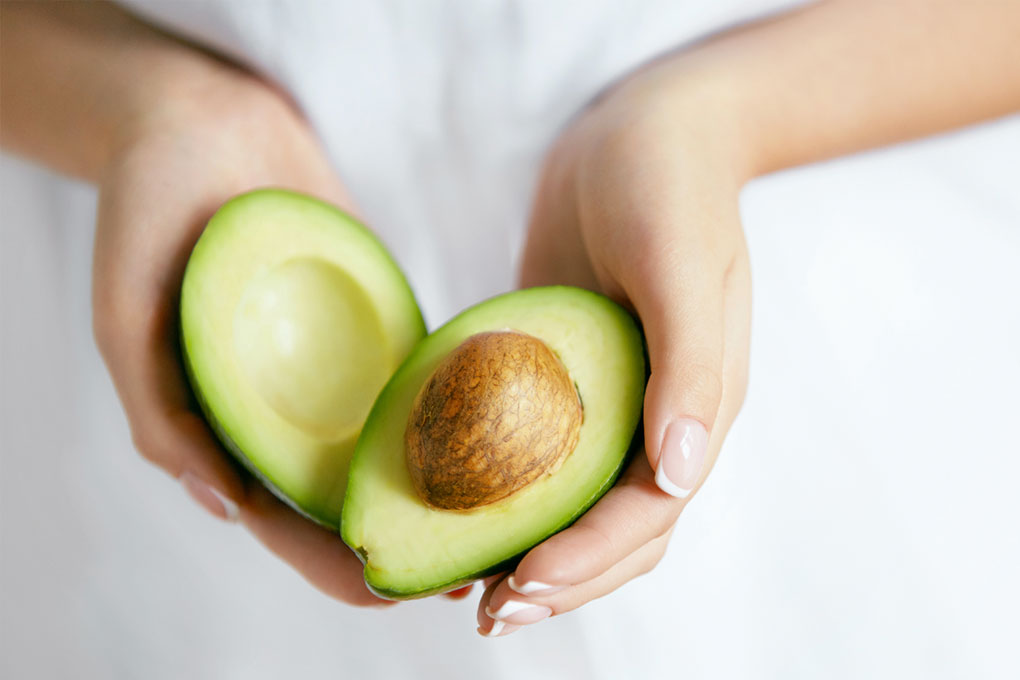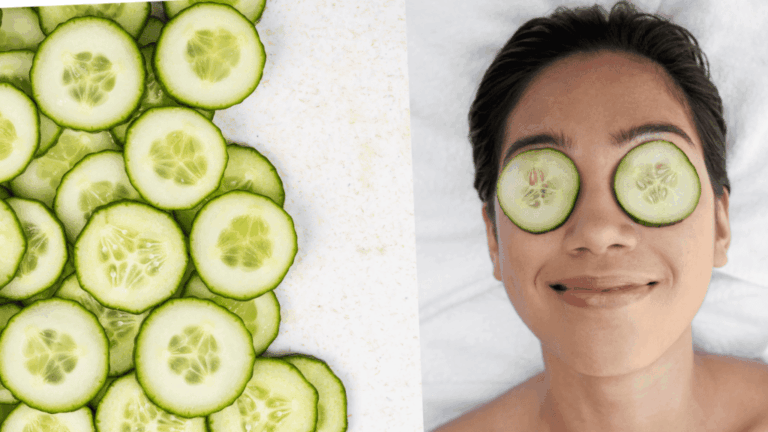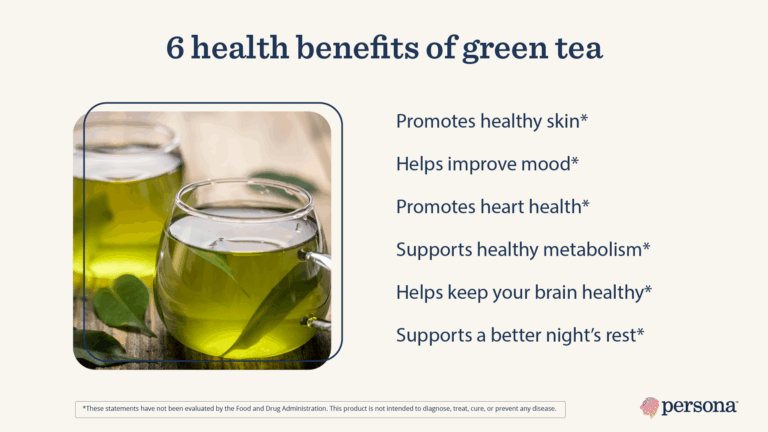Sharper Vision and Brain Boost: The Lutein and Zeaxanthin in Avocado – A Journey of Discovery
In an age defined by glowing screens, constant information streams, and the relentless march of time, our most precious sensory organs – our eyes and brain – are under unprecedented strain. We seek clarity, focus, and resilience, often turning to complex pharmaceuticals or cutting-edge technologies. Yet, sometimes, the profound answers lie not in the future, but in the ancient wisdom of nature, hidden within the vibrant palette of our food. This is the story of two remarkable compounds, lutein and zeaxanthin, and their synergistic relationship with a humble, yet extraordinary, fruit: the avocado. It’s a tale of scientific revelation, evolutionary adaptation, and the enduring power of nutrition to fortify the very essence of our perception and cognition.
The Genesis of Insight: Unveiling the Carotenoid Crusaders
Our journey begins not with the avocado itself, but with the very essence of color in the natural world. Lutein and zeaxanthin belong to a vast family of pigments known as carotenoids, responsible for the brilliant reds, oranges, and yellows of countless fruits, vegetables, and flowers. For eons, these compounds were admired for their aesthetic beauty, their role in photosynthesis, and their allure to pollinators. Their profound significance for human health, however, remained largely veiled until the latter half of the 20th century.
The initial whispers of their importance emerged from ophthalmological research. Scientists observed a peculiar yellow spot at the very center of the human retina, the macula lutea (literally, "yellow spot"). This macula is responsible for our sharpest, most detailed vision, the very core of our visual world. The presence of this yellow pigment was a long-standing mystery. What was its composition, and more importantly, what was its function?
Through painstaking biochemical analysis, researchers eventually identified the primary constituents of this macular pigment: lutein and zeaxanthin. This discovery was a pivotal moment, shifting the perception of these dietary pigments from mere colorants to critical functional components of human biology. It was as if nature had placed a specialized filter, an internal pair of sunglasses, directly into the most vital part of our visual apparatus.
The initial hypothesis was compelling: these carotenoids, by absorbing harmful blue light – a high-energy wavelength known to cause oxidative damage – acted as a protective shield for the delicate photoreceptor cells of the macula. But their role, as subsequent research would reveal, was far more complex and multifaceted. They weren’t just filters; they were active participants in maintaining retinal health, potent antioxidants, and sophisticated anti-inflammatory agents.
This initial revelation sparked a flurry of research. Scientists began to trace the path of these carotenoids from their plant origins, through the human digestive system, across the blood-retinal barrier, and into their final, crucial destination. The question then became: if these compounds are so vital, how do we best deliver them to where they are needed most? And this is where our story turns to the unassuming, yet remarkably potent, avocado.
The Avocado: A Mesoamerican Marvel’s Modern Relevance
Before it graced the brunch menus of trendy cafes or became the darling of health-conscious millennials, the avocado (Persea americana) held a place of reverence in ancient Mesoamerican cultures. Cultivated for thousands of years, primarily by the Aztecs and Mayans, it was prized not just for its creamy texture and rich flavor, but for its perceived medicinal and aphrodisiac qualities. Its name, "ahuacatl" in Nahuatl, even means "testicle," perhaps alluding to its shape or its purported fertility-enhancing properties.
Fast forward to the modern era, and the avocado has transcended its exotic origins to become a global superfood. Its nutritional profile is a veritable treasure trove: rich in monounsaturated fatty acids (primarily oleic acid), dietary fiber, potassium, Vitamin K, Vitamin C, Vitamin B6, and folic acid. But it is its unique relationship with lutein and zeaxanthin that truly elevates its status in the context of visual and cognitive health.
Unlike many other L&Z-rich foods, such as leafy green vegetables, the avocado provides a crucial advantage: the perfect delivery system. Lutein and zeaxanthin are fat-soluble compounds. This means they require dietary fat for optimal absorption in the digestive tract. The avocado, with its abundant healthy monounsaturated fats, essentially packages these vital carotenoids with their own bioavailability enhancer. It’s a masterful design by nature, ensuring that the body can readily extract and utilize these protective pigments.
Imagine a specialized vehicle designed to transport precious cargo. The avocado is not just the cargo (L&Z), but also the vehicle (healthy fats) that ensures safe and efficient delivery to its destination. This synergistic relationship is a cornerstone of its efficacy and a testament to the intricate intelligence embedded within natural food systems.
The Eye’s Fortress: Lutein and Zeaxanthin in Action
With the carotenoids identified and their optimal delivery system understood, the scientific narrative deepened. The focus shifted to the precise mechanisms by which lutein and zeaxanthin safeguard our vision.
1. Blue Light Filtration: This was the initial and remains a primary mechanism. The macula, particularly the fovea (the very center of the macula), is exquisitely sensitive to light. High-energy visible (HEV) blue light, emitted by sunlight and increasingly by digital screens, penetrates deep into the eye, generating reactive oxygen species (ROS) that can damage photoreceptor cells and the retinal pigment epithelium (RPE) – a crucial support layer for the photoreceptors. Lutein and zeaxanthin, with their distinct spectral absorption properties, effectively absorb a significant portion of this harmful blue light before it reaches the most vulnerable cells, acting as an "internal pair of sunglasses."
2. Potent Antioxidant Activity: Beyond mere filtration, L&Z are powerful antioxidants. The retina is one of the most metabolically active tissues in the body, consuming vast amounts of oxygen and thus inherently susceptible to oxidative stress. The constant exposure to light also generates free radicals. Lutein and zeaxanthin, with their conjugated double-bond structures, are exceptionally efficient at neutralizing these free radicals, quenching their damaging effects and preventing a cascade of cellular injury that can lead to retinal degeneration. They are not merely passive shields but active defenders against molecular assault.
3. Anti-Inflammatory Properties: Chronic low-grade inflammation is now recognized as a significant contributor to many age-related diseases, including those affecting the eye. Emerging research indicates that lutein and zeaxanthin possess anti-inflammatory properties, modulating signaling pathways that contribute to inflammation in the retina. By dampening inflammatory responses, they help to preserve the delicate cellular architecture and function of the macula, contributing to long-term visual health.
4. Enhanced Visual Acuity and Contrast Sensitivity: The benefits extend beyond disease prevention. Studies have shown that higher levels of macular pigment optical density (MPOD) – a measure of the concentration of L&Z in the macula – are associated with improved visual performance in healthy individuals. This includes enhanced visual acuity (sharpness), improved contrast sensitivity (the ability to discern subtle differences in light and shadow, crucial for night driving or reading in low light), and reduced glare sensitivity. This suggests that L&Z don’t just protect vision; they actively optimize it.
Clinical Evidence and Conditions:
The scientific understanding of L&Z’s role in vision has translated into significant clinical applications, particularly in the prevention and management of age-related macular degeneration (AMD) and cataracts – the two leading causes of vision loss globally.
-
Age-Related Macular Degeneration (AMD): AMD is a progressive disease that damages the macula, leading to blurred central vision. Landmark studies, such as the Age-Related Eye Disease Study (AREDS and AREDS2), demonstrated that supplementation with specific nutrients, including lutein and zeaxanthin, could significantly slow the progression of AMD in individuals at high risk. This evidence has solidified L&Z’s position as critical components in AMD prevention strategies. The concept is straightforward: by bolstering the macula’s natural defenses, these carotenoids help it withstand the cumulative oxidative and inflammatory damage that underlies AMD.
-
Cataracts: Cataracts, the clouding of the eye’s natural lens, are primarily caused by oxidative damage to lens proteins over time. Lutein and zeaxanthin are also found in the lens of the eye, where they perform similar antioxidant and blue-light filtering roles. Epidemiological studies have consistently shown an inverse relationship between dietary intake of L&Z and the risk of cataract development. While not a cure, adequate intake appears to be a protective factor against this common age-related condition.
-
Digital Eye Strain: In our screen-dominated world, digital eye strain (or computer vision syndrome) is rampant. While not a disease, it manifests as eye fatigue, dryness, headaches, and blurred vision. The constant barrage of blue light from screens contributes to this discomfort. By enhancing MPOD, lutein and zeaxanthin can help filter this blue light, potentially reducing visual fatigue and improving comfort during prolonged screen use. They effectively upgrade our natural ocular defense system in the face of modern visual demands.
The story of lutein and zeaxanthin in the eye is one of elegant evolutionary design, where nature’s pigments provide sophisticated protection for our most precious sense. But the narrative doesn’t end there. As scientific tools became more refined and curiosity expanded, researchers began to uncover an even more astonishing role for these carotenoids: their profound impact on the brain.
The Brain’s Symphony: Beyond Ocular Dominance
For decades, lutein and zeaxanthin were almost exclusively associated with eye health. However, a groundbreaking shift occurred when researchers began to detect these same carotenoids in significant concentrations within the human brain, particularly in regions critical for cognitive function such as the hippocampus (memory) and frontal cortex (executive functions, attention). This discovery was a seismic event, suggesting that these "eye nutrients" had a much broader, and perhaps equally vital, role to play in human physiology.
The brain, like the retina, is a highly metabolically active organ, consuming about 20% of the body’s oxygen despite accounting for only 2% of its weight. This intense metabolic activity makes it particularly vulnerable to oxidative stress and inflammation, factors known to contribute to neurodegeneration and cognitive decline. The presence of lutein and zeaxanthin in brain tissue suggested they might be performing similar protective roles as they do in the eye, acting as a "nutritional shield" for neural cells.
Mechanisms of Neuroprotection and Cognitive Enhancement:
The proposed mechanisms by which L&Z benefit the brain mirror, and in some cases expand upon, their ocular functions:
1. Brain-Specific Antioxidant Activity: The brain’s lipid-rich environment is highly susceptible to lipid peroxidation, a damaging process caused by free radicals. Lutein and zeaxanthin, being lipid-soluble, can integrate into neuronal cell membranes, where they effectively scavenge reactive oxygen species, preventing damage to critical cellular components like DNA, proteins, and lipids. This protection is crucial for maintaining neuronal integrity and function.
2. Anti-Inflammatory Modulation in the Brain: Chronic neuroinflammation is a key driver of neurodegenerative diseases and cognitive impairment. L&Z have been shown to modulate inflammatory pathways within the brain, reducing the production of pro-inflammatory cytokines and protecting against microglia activation (microglia are the brain’s immune cells, which can become damaging when overactivated). By calming neuroinflammatory responses, they contribute to a healthier brain microenvironment, fostering optimal neuronal communication.
3. Enhanced Neural Efficiency: Beyond direct protection, emerging research suggests that L&Z may directly enhance neural processing. Some theories propose they could optimize cell membrane fluidity or influence signaling pathways, leading to more efficient communication between neurons. This could translate into faster processing speed, improved reaction times, and better overall cognitive performance.
4. Structural Integrity and Synaptic Plasticity: The brain’s ability to form and strengthen connections between neurons (synaptic plasticity) is fundamental to learning and memory. Preliminary studies hint that L&Z might play a role in maintaining the structural integrity of neuronal membranes and supporting synaptic function, thereby contributing to the brain’s adaptability and learning capacity.
Cognitive Domains Impacted:
Clinical studies, though still emerging compared to ocular research, are beginning to paint a compelling picture of L&Z’s impact on various cognitive domains:
- Memory: Several studies, particularly in older adults, have linked higher levels of brain lutein and zeaxanthin to better performance on memory tasks, including episodic memory (recalling specific events) and verbal fluency.
- Executive Function: This umbrella term includes abilities like planning, problem-solving, attention, and cognitive flexibility. Research suggests L&Z may improve these higher-order cognitive processes, which are crucial for navigating complex daily life.
- Processing Speed: The speed at which our brains can process information naturally declines with age. L&Z intake has been associated with maintaining or even improving cognitive processing speed, allowing for quicker thinking and reactions.
- Neural Efficiency and Connectivity: Advanced neuroimaging techniques are beginning to reveal that individuals with higher brain L&Z levels exhibit more efficient neural networks and stronger functional connectivity between key brain regions, suggesting a more robust and optimized cognitive architecture.
The Lifespan Perspective:
The brain benefits of lutein and zeaxanthin appear to span the entire human lifespan.
- Early Development: Research indicates that L&Z are transferred from mother to fetus, accumulating in the infant brain. They are present in breast milk, highlighting their importance for early brain development. Some studies are exploring links between early life L&Z exposure and later cognitive outcomes.
- Midlife and Healthy Aging: This is a key area of focus. As cognitive decline often begins subtly in midlife, proactive nutritional strategies become critical. Maintaining adequate L&Z levels through diet may be a vital strategy for preserving cognitive function and building cognitive reserve, potentially delaying the onset or mitigating the severity of age-related neurodegenerative conditions. The "Brain Carotenoid Index," measured non-invasively, is emerging as a potential biomarker for brain health.
The presence of lutein and zeaxanthin in the brain, performing similar protective and optimizing roles as in the eye, underscores a remarkable evolutionary insight: the same compounds that protect our windows to the world also safeguard the very organ that interprets and understands it. The avocado, with its unique capacity to deliver these compounds efficiently, thus emerges as a cornerstone of a holistic strategy for both visual and cognitive vitality.
The Holistic Perspective and Practical Application
The story of lutein, zeaxanthin, and the avocado is not just a scientific narrative; it’s a practical guide to informed dietary choices. Understanding the mechanisms and benefits empowers us to integrate these insights into our daily lives.
Dietary Considerations:
While avocado is an excellent source of highly bioavailable lutein and zeaxanthin, it’s crucial to remember that a diverse diet is key. Other rich sources include:
- Leafy Greens: Spinach, kale, collard greens, turnip greens (especially high in lutein).
- Brightly Colored Vegetables: Corn, peas, broccoli, Brussels sprouts, orange peppers (good sources of both).
- Egg Yolks: A bioavailable source, as the fat in the yolk aids absorption.
The key takeaway for optimal absorption is to consume these carotenoids with a source of healthy fat. This is where the avocado truly shines, providing both the carotenoids and the fat in one convenient package. A simple avocado toast, a generous serving of guacamole, or slices of avocado added to a salad can significantly boost L&Z intake and absorption.
Beyond the Plate: A Lifestyle Approach:
While the avocado is a powerful ally, it’s important to view its role within a broader context of healthy living. Lutein and zeaxanthin are not magic bullets, but rather essential components of a lifestyle that supports optimal vision and brain health. This includes:
- Regular Exercise: Improves blood flow to the brain and eyes, reduces inflammation, and enhances cognitive function.
- Adequate Sleep: Crucial for memory consolidation, waste removal from the brain, and ocular recovery.
- Stress Management: Chronic stress can negatively impact both vision and cognition.
- Avoiding Harmful Habits: Smoking and excessive alcohol consumption are detrimental to eye and brain health.
- Regular Eye Exams: Early detection and management of eye conditions are vital.
- Cognitive Engagement: Lifelong learning, puzzles, and social interaction help maintain brain vitality.
Future Directions and Personalized Nutrition:
The ongoing research into lutein and zeaxanthin is dynamic and exciting. Future studies will likely delve deeper into:
- Individual Variability: Why do some individuals absorb and utilize L&Z more efficiently than others? The role of genetics, gut microbiome, and other dietary factors needs further exploration. This will pave the way for more personalized nutritional recommendations.
- Synergistic Effects: How do L&Z interact with other nutrients (e.g., omega-3 fatty acids, other antioxidants) to produce even greater benefits? The concept of nutrient synergy is powerful.
- Neuroimaging and Biomarkers: Refined neuroimaging techniques will provide a clearer picture of L&Z’s direct impact on brain structure and function. The development of reliable, non-invasive biomarkers for brain carotenoid status will be crucial for monitoring and tailoring interventions.
- Specific Cognitive Disorders: Can L&Z play a role in mitigating the progression of specific neurodegenerative diseases like Alzheimer’s or Parkinson’s, beyond general cognitive enhancement?
The story of lutein and zeaxanthin in avocado is far from over. It is an evolving narrative, continually enriched by scientific discovery, reaffirming nature’s profound intelligence and its capacity to provide the tools we need to thrive.
Conclusion: The Avocado – A Symbol of Nature’s Enduring Wisdom
From the ancient Mesoamerican groves to the sophisticated laboratories of modern science, the journey of understanding lutein and zeaxanthin, and their potent partnership with the avocado, is a testament to the enduring power of observation and inquiry. We began with a mystery: the yellow spot in the eye. We uncovered its constituents, traced their origins, and meticulously detailed their roles as filters, antioxidants, and anti-inflammatory agents safeguarding our vision.
But the story transcended the ocular, revealing an even deeper connection to our cognitive core. These "eye nutrients" are, in fact, "brain nutrients" too, offering neuroprotection and enhancing cognitive performance across the lifespan. The avocado, once an exotic fruit, stands as a symbol of this profound connection – a natural package of vital compounds, perfectly designed for optimal absorption and delivery to the most sensitive and crucial parts of our being.
In a world increasingly demanding of our eyes and minds, the wisdom lies not in chasing elusive remedies, but in embracing the intelligence of nature. The avocado, with its rich bounty of lutein and zeaxanthin, offers a delicious, accessible, and scientifically validated path to sharper vision and a more resilient, vibrant brain. It is a reminder that sometimes, the most sophisticated solutions are found in the simplest, most natural forms, waiting for us to rediscover their ancient, yet profoundly modern, power. Our journey of understanding continues, but the avocado has already written a significant chapter in the ongoing narrative of human health and the remarkable potential within our natural world.






